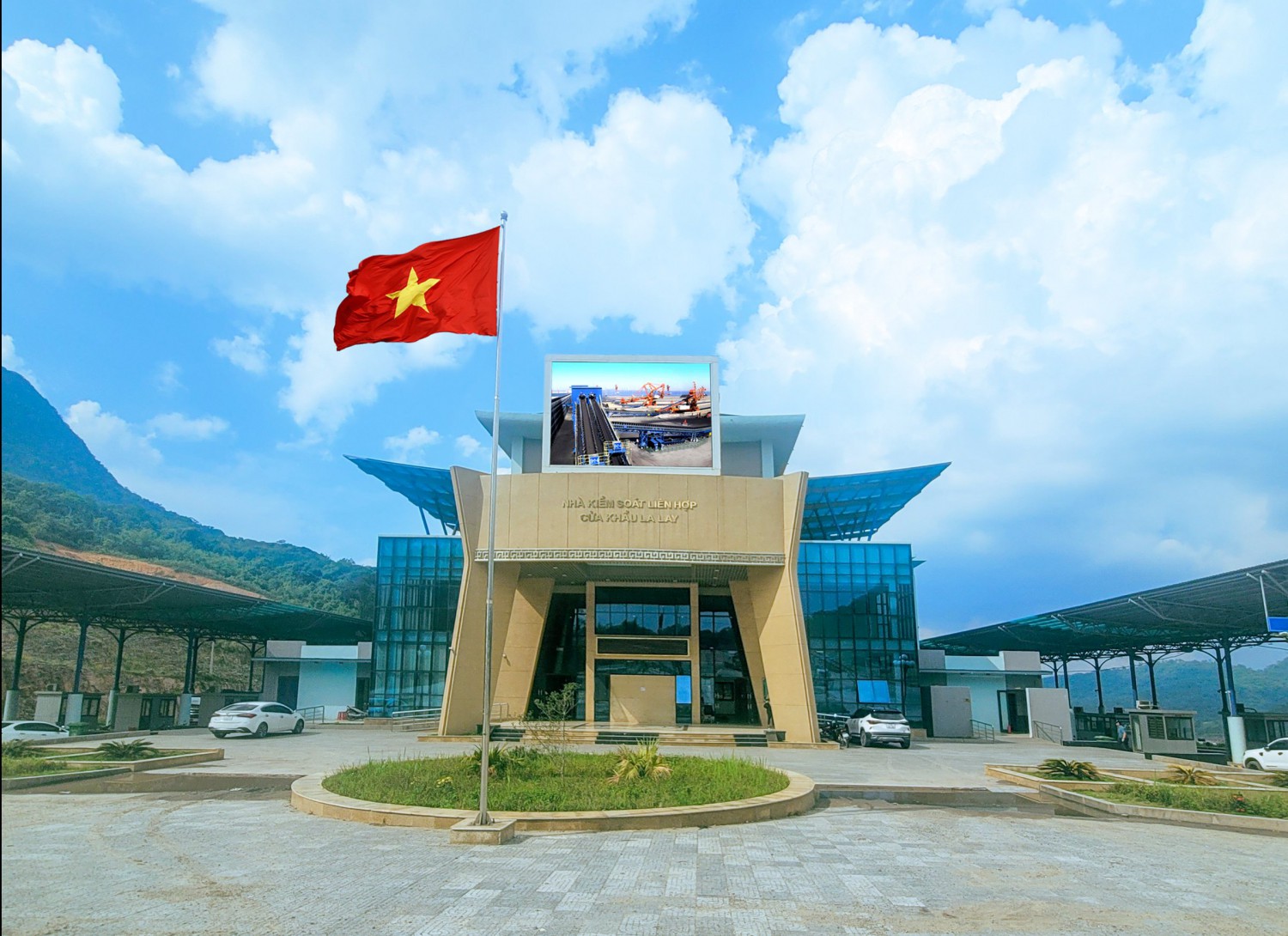On October 15, 2024, the People's Committee of Quang Tri province issued Decision No. 2514/QD-UBND on approving the research results of the Project “Cooperation in developing the economic corridor of Quang Tri (Vietnam) - Salavan (Laos) - Ubon Ratchathani (Thailand)”.
La Lay International Border Gate - Quang Tri (Photo: Hai Quang)
Accordingly, the general objective of the project is to study and develop an orientation for cooperation in economic, trade, investment and tourism development between localities and countries in the Quang Tri (Vietnam) - Salavan (Laos) - Ubon Ratchathani (Thailand) Economic Corridor (abbreviated as the PARA-EWEC corridor) to exploit the advantages of the necessary conditions to exploit the infrastructure connection works that are being and will be implemented by the three countries of Thailand, Laos and Vietnam.
Specific objectives: Overview of the scientific basis for the formation of the economic corridor. Analyze the current status of socio-economic infrastructure in localities along the PARA-EWEC corridor; clarify the opportunities and challenges, context, needs for connection, development and exploitation of this corridor. Propose viewpoints and strategic orientations for the formation and development of the PARA-EWEC corridor. Preliminary proposals for investment projects to build technical infrastructure to effectively exploit the corridor, serving the socio-economic development of Quang Tri province and localities along the PARA-EWEC corridor.
The scope of the project includes: the provinces through which the corridor passes (starting from Quang Tri to Salavan and Ubon Ratchathani and some other related localities); Assessment of the situation from 2010 to present; assessment of prospects in the period 2023 - 2030 and vision to 2050.
In the Decision, the Provincial People's Committee proposed implementation solutions. Specifically:
1. Group of solutions on investment capital mobilization:
+ Mobilizing investment capital from the state budget: Countries and localities in the corridor consider the possibility of concentrating the budget on investment expenditure for large-scale infrastructure projects at international border gates, connecting traffic routes, etc.; Perfecting the budget collection policy for land, assets, resources; having appropriate mechanisms to exploit resources from land for developing infrastructure of the corridor; Considering the possibility of issuing government bonds and project bonds to attract more development investment capital.
+ Regarding capital from the domestic private sector: Recommend that governments of countries complete legal regulations related to the public-private partnership (PPP) method in investing in infrastructure development in mountainous and poor areas, mechanisms and preferential policies for the private sector, FDI participating in PPP projects to build the infrastructure network of the corridor; Develop a mechanism to encourage coordination and cooperation between enterprises; Develop a policy to develop key economic sectors in parallel with encouraging the mobilization of capital sources from the private sector.
+ For foreign direct investment capital: Research and develop policies to attract foreign investment with outstanding incentives; Encourage attracting foreign investment in labor-intensive industries in urban areas along the corridor; Implement outstanding mechanisms and policies on planning, infrastructure, land access, administrative procedures, etc. for economic zones, industrial parks, and concentrated agricultural zones.
+ For ODA capital and preferential loans: Take advantage of cooperation opportunities and international financial sources with preferential, appropriate, and effective conditions and interest rates, focusing on projects to develop infrastructure systems in the corridor, direct investment projects that promote growth associated with sustainable development, and have spillover effects.
2. Group of solutions on mechanisms and policies
+ Mechanism and policies for developing growth poles: Prioritizing investment from the state budget and creating favorable conditions and preferential mechanisms and policies for the private sector and foreign-invested sectors; Researching and building open border economic zones to become new development drivers of the locality; building investment attraction orientations; Implementing power grid connections between localities in the corridor and with other localities.
+ Mechanism and policies for developing disadvantaged areas: Paying attention to investing in disadvantaged areas, creating conditions for people to have equal access to resources, development opportunities and fair enjoyment of basic social services.
3. Group of solutions on human resource development: Strengthening cooperation between training institutions and research institutes of the three countries to train qualified human resources in terms of expertise; Prioritize investment in vocational training facilities in major cities, etc.
4. Group of solutions on international cooperation
+ Strengthen cooperation between the three countries, localities in the corridor with other localities and with other territorial localities.
+ Build a clear mechanism, information exchange mechanism and cooperation plan to promote preferential policies to attract investment.
+ Continue to promote foreign information work.
+ Invest in building and upgrading electronic information pages (on economic diplomacy) of localities in many foreign languages.
+ Expand people-to-people exchanges.
+ Strengthen cooperation with countries, international organizations, financial institutions, funding agencies (such as ADB, WB...).
5. Group of other solutions:
+ Strengthen cooperation between the three countries and localities in the corridor to exploit "green finance" sources for environmental protection and climate change adaptation.
+ Strengthen cooperation and attract resources for investment, ensuring the safety of reservoirs.
+ Focus on cooperation between the three countries and localities in the corridor on cross-border environmental issues.
+ Strengthen defense and security cooperation in the border areas of the three countries.
